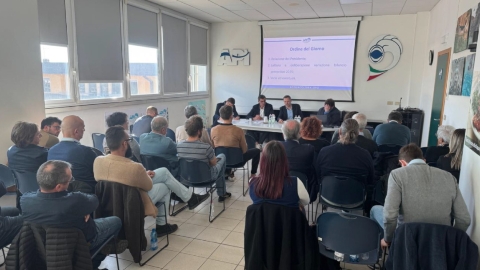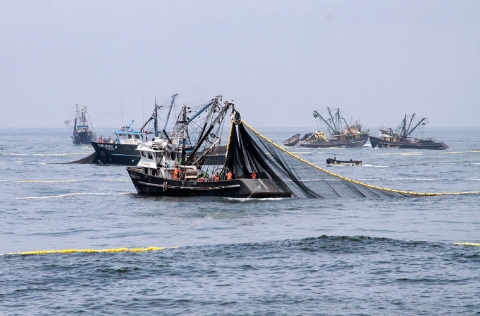
Does global aquaculture depend on the Peruvian anchoveta fishery? The short answer is yes. Each year, Peru lands millions of tonnes of anchoveta, making it the largest single-species fishery in the world. While Mediterranean European seabass, or Norwegian salmon, do not directly rely on Peruvian fishmeal, the capacity of this fishery to supply the global market has a direct impact on prices.
Peru produces between 20% and 30% of the world’s fishmeal and fish oil – essential ingredients for feeding fish, shrimp, and other farmed aquatic animals.
This vulnerability is heightened by the threat of climate change. Despite being one of the best-managed fisheries on the planet, the Peruvian anchoveta fishery is extremely to warning in the eastern Pacific and to the intensity of El Niño events.
For instance, in 2023, the suspension of the fishing season led to a rise of more than 40% in international fish oil prices.
Climate instability, combined with resource pressure, could undermine the predictability and long-term sustainability of this fishery. Scientific reports warns that such extreme environmental factors will become increasingly frequent and intense, potentially causing the redistribution of anchoveta stocks and making it harder to locate biomass.
The Start of the Second Fishing Season in Peru
A clear example of this precautionary management is the launch of the 2025 Second Fishing Season in the North-Central Zone, autorised by the Ministry of Production (PRODUCE).
The season began with a provisional quota of 500,000 tonnes, priorising Operational EUREKA LXXVII. This scientific survey, led by IMARPE, is vital for gathering updated data on the distribution of the resource and oceanographic conditions before setting the final Total Allowable Catch.
This strategy reflects the sector’s commitment to balancing resource conservation with economic activity, ensuring the sustainability of the anchoveta biomass.
A Study Highlights the Urgency of Finding Alternatives
The continued growth of aquaculture that relies on feed for carnivorous fish is constrained by the availability of high-quality marine ingredients. Aware of this, the industry – with strong scientific support – is working against the clock to continue supplying quality feed that guarantees the sustainable expansion of production.
A recent study published in Nature Food, titled “Unstable supply and future shortages of wild forage fish heighten risks to global fed aquaculture production”, underscores this urgency.
The authors warn that the reduction in forage fish supply, due to strict fisheries management and climate stress, could lead to decline of up to 35.2% in global aquaculture production.
To mitigate this risk and maintain current output levels, the study estimates that the industry will need to replace up to 1.8 million metric tonnes of ingredients annually.
At present, science is focusing on the strategic use of animal and plant protein, the re-use of fishery and agricultural by-products, and the inclusion of novel ingredients such as insect meal, bacterial proteins, and microalgae.
Despite accelerated innovation and adoption of subtitles, alternative ingredients still account for less than 30% of current aquafeeds.
The Peruvian anchoveta remains an invisible yet irreplaceable link that supports a significant portion of global food security. The future of aquaculture depends on continued investment in research and innovation, and on an international community committed to tackling the challenges of climate change – providing the industry with the predictability it needs to keep feeding the planet responsibly.



